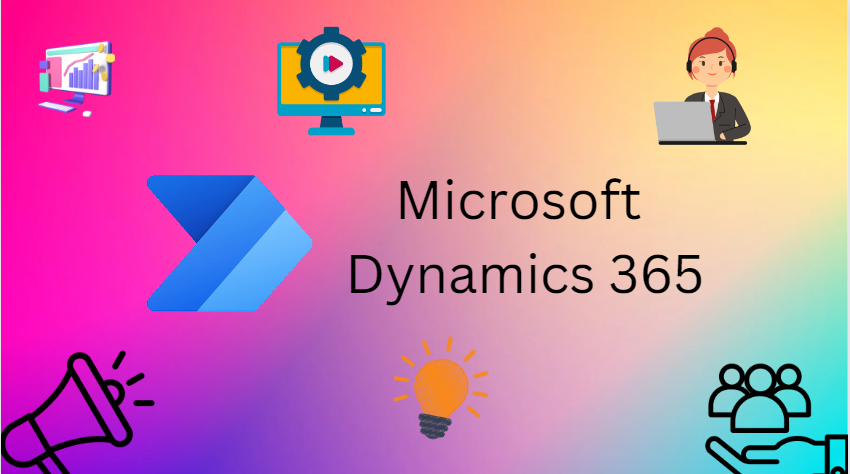Create a new dynamics 365 environment
Use an existing environment. This environment must be Dynamics 365 apps–enabled.
Sign in to the Power Platform admin center at https://admin.powerplatform.microsoft.com as an admin (Dynamics 365 admin, Global admin, or Power Platform admin).
From the left-side menu, select Environments, and then select an environment. Under Refresh cadence, choose the cadence type. Select Save
Account:-
In Dynamics 365 for Customer Engagement, an account represents a company with which the business unit has a relationship. Information that is included in an account is all relevant contact information, company information, category, relationship type, and address information.
Contact:-
In Dynamics 365 for Customer Engagement, a contact represents a person, usually an individual, with whom a business unit has a relationship, such as a customer, a supplier, or a colleague.
Difference Between Account And Contact:-
Accounts are companies that you’re doing business with, and contacts are the people who work for them. Accounts and contacts are related to many other standard objects, which makes them some of the most important objects in Salesforce.
Solution:-
Solutions are how customizers and developers author, package, and maintain units of software that extend Dynamics 365 for Customer Engagement.
Solutions are three types they are ;
1.Default Solution
2.Managed Solution
3.Unmanaged Solution
Default Solution:-
The Default Solution is a special solution that contains all components in the system. The default solution is useful for discovering all of the components and configurations in your system.
Managed:-
A managed solution is a completed solution that is intended to be distributed and installed.
Unmanaged solution:-
unmanaged solution is one that is still under development or isn’t intended to be distributed.
1.Sign into your Dynamics 365 Customer Engagement (on-premises) instance.
2.Start solution explorer. Settings > Customizations > Publisher
3.Select New
4.Enter the following required information.
Publisher:-A Publisher is a real world entity which publishes Solutions in Dynamics CRM. Those entity can be a person, department or company.
Entity:-
The entities are used to model and manage business data in Dynamics 365 Customer Engagement (on-premises). For example, entities such as account, campaign, and incident (case) can be used to track and support sales, marketing, and service activities
1.Sign into your Dynamics 365 Customer Engagement.
2.Start solution explorer. Settings > Customizations > Customize the System.
3.In the Component Type list, select New, and then select Entity.
4.Enter the following required information.
Form:-
In Dynamics 365 Sales, forms provide the user interface that people use to interact with the data they need to do their work. It is important that the forms people use are designed to allow them to find or enter the information they need quickly.
Main forms:-
Main forms are the primary user interface where people view and interact with their data. Main forms provide the widest range of options and are available for custom business apps.
Quick view form:-
A quick view form can be added to another form as a quick view control. It provides a template to view information about a related entity record within a form for another entity record. This means your app users do not need to navigate to a different record to see the information needed to do their work.
Quick create form:-
quick create forms appear when you select the Create button in the navigation bar or when you choose + New when creating a new record from a lookup or sub-grid. The Customer Engagement customer engagement mobile apps use quick create forms for creating new records.
card form:-
Lorem ipsum dolor sit amet, consectetur adipiscing elit. Ut elit tellus, luctus nec ullamcorper mattis, pulvinar dapibus leo.
Originally introduced in the Interactive Service Hub, Card Forms provide a key function in Dynamics 365 Customer Engagement: Optimizing space while providing key information about individual records. When there is no space available for showing columns side by side, this feature is immensely helpful.
Views:-
which manages what columns are displayed, the width of those columns, and how those records are sorted.
Charts:-
Charts in Dynamics 365 can be classified as one of two types of charts : Single-series charts and multi-series charts. Single-series Charts – Single-series charts are visualizations that display data with a series Y value mapped to a category x value.
Field:-
defines the individual data items that can be used to store data in an entity. Fields are sometimes called attributes by developers. In solution explorer, customization tools are used to edit system fields that allows customization, and to create or edit a custom field.
Basically, the concept of Field types in CRM are involved with 3 categories as follows:
1.Simple field: It is a traditional field which contains data.
2.Calculated field: It can be defined with the calculations based on formula that use fields from the current entity or related parent entities.
3.Rollup field: It can be defined with an aggregate value computed from the records related to a record, or a value computed over a hierarchy.
Currently, Microsoft supports 14 data types in field are as follows.
1. Single Line of Text
2. Option set
3. MultiSelect Option set
4. Two Options
5. Image
6. Whole Number
7. Floating Point Number
8. Decimal Number
9. Currency
10. Multiple Lines of Text
11. Date and Time
12. Lookup
13. Customer
14. File
Dashboard:-
Each time you sign into the system you’ll see a dashboard, which gives you easy-to-read charts and graphs that help you see how you and your team are doing with key metrics
There are three types of dashboards mainly used in the market, and they are:
- A) Operational Dashboard. This dashboard is designed to provide users with real-time information about the company’s daily operation.
- B) Analytical Dashboard.
- C) Strategic Dashboard.
Web resources:-
Web Resources in CRM are the virtual web files that are stored in CRM database and used to implement web page functionalities in CRM. These files can be of HTML, JScript, Silverlight, or any other supported types.

